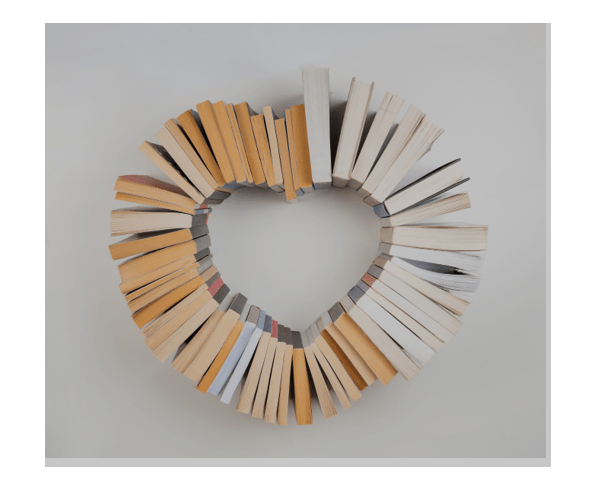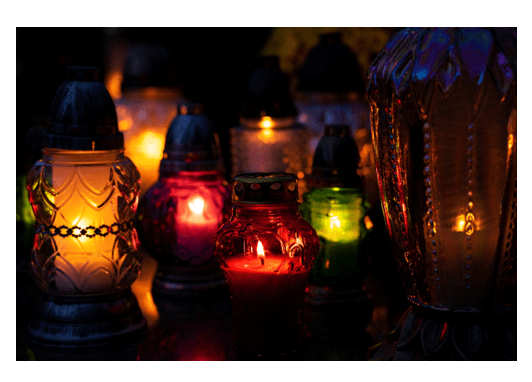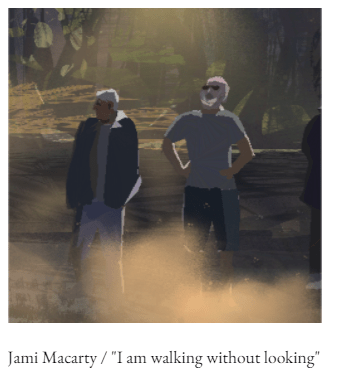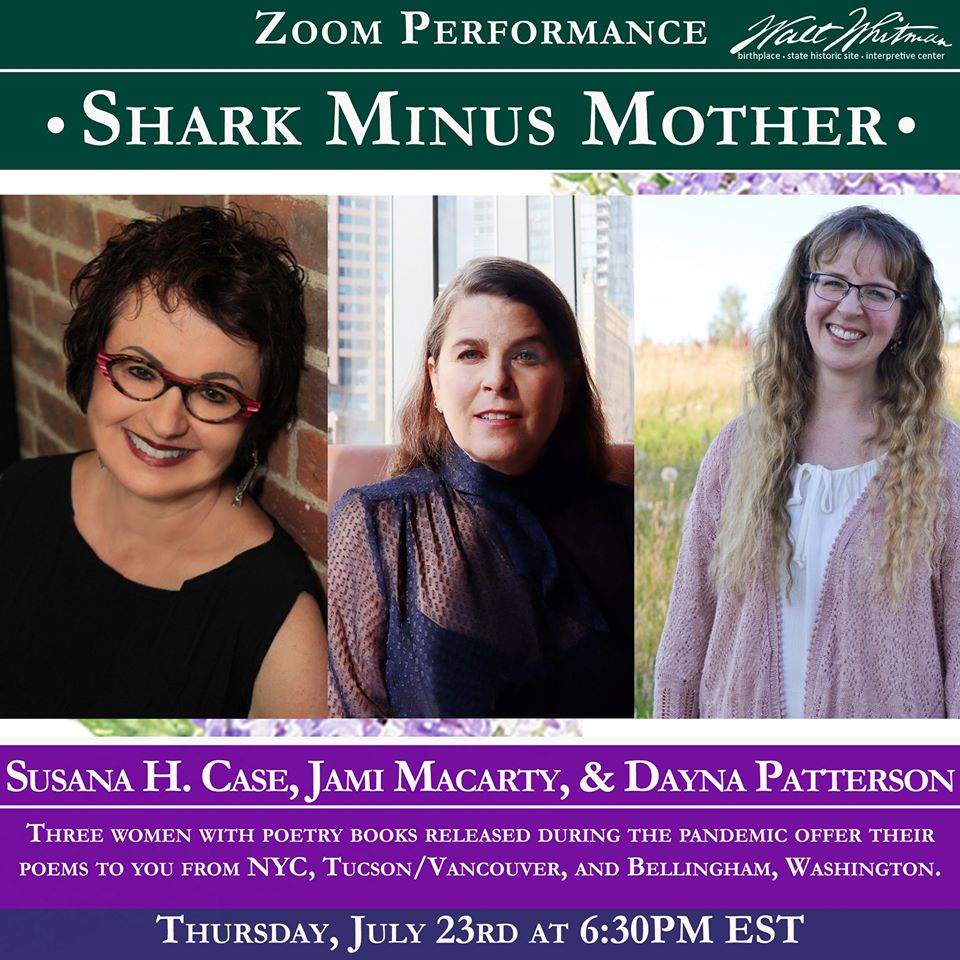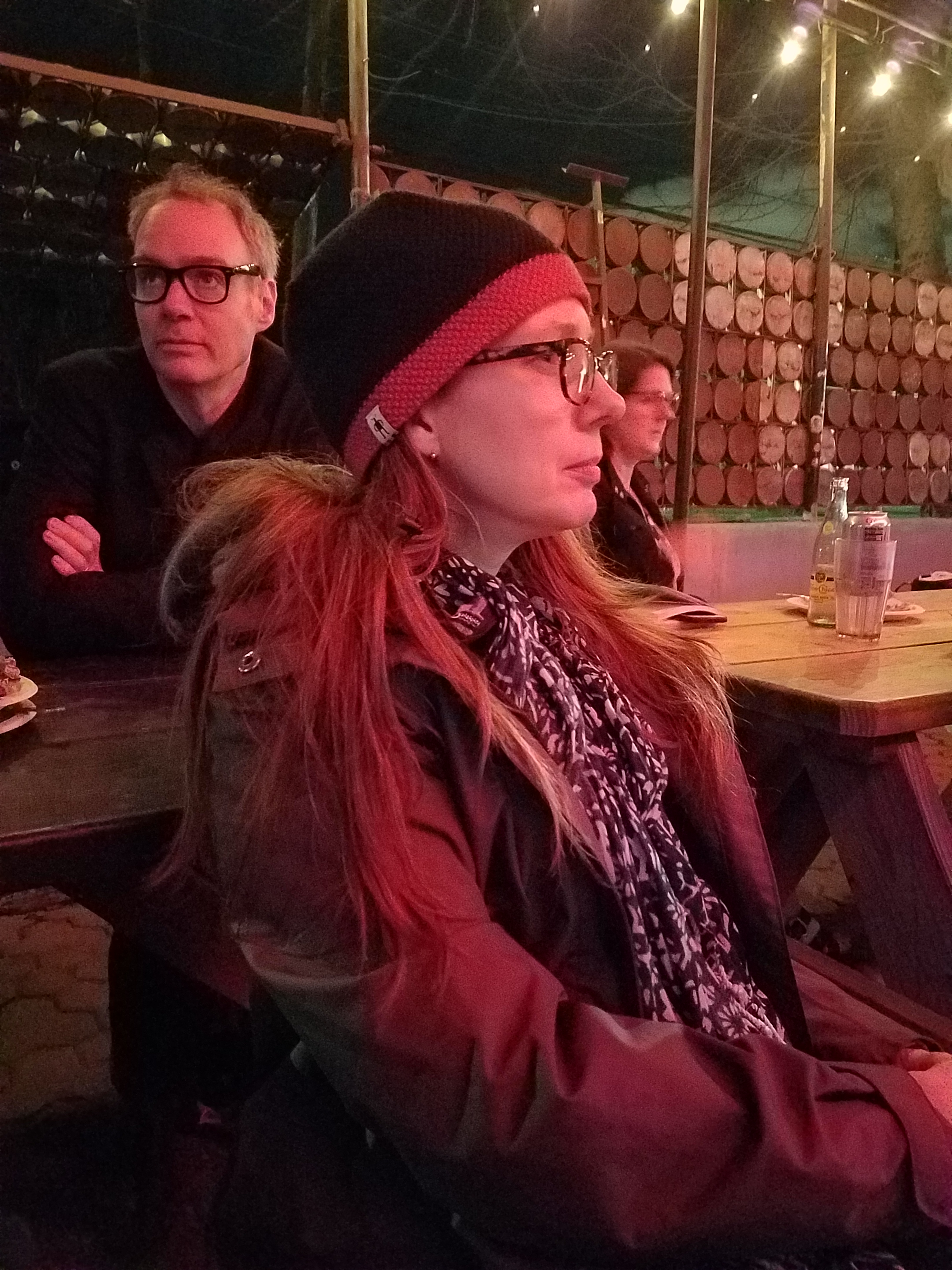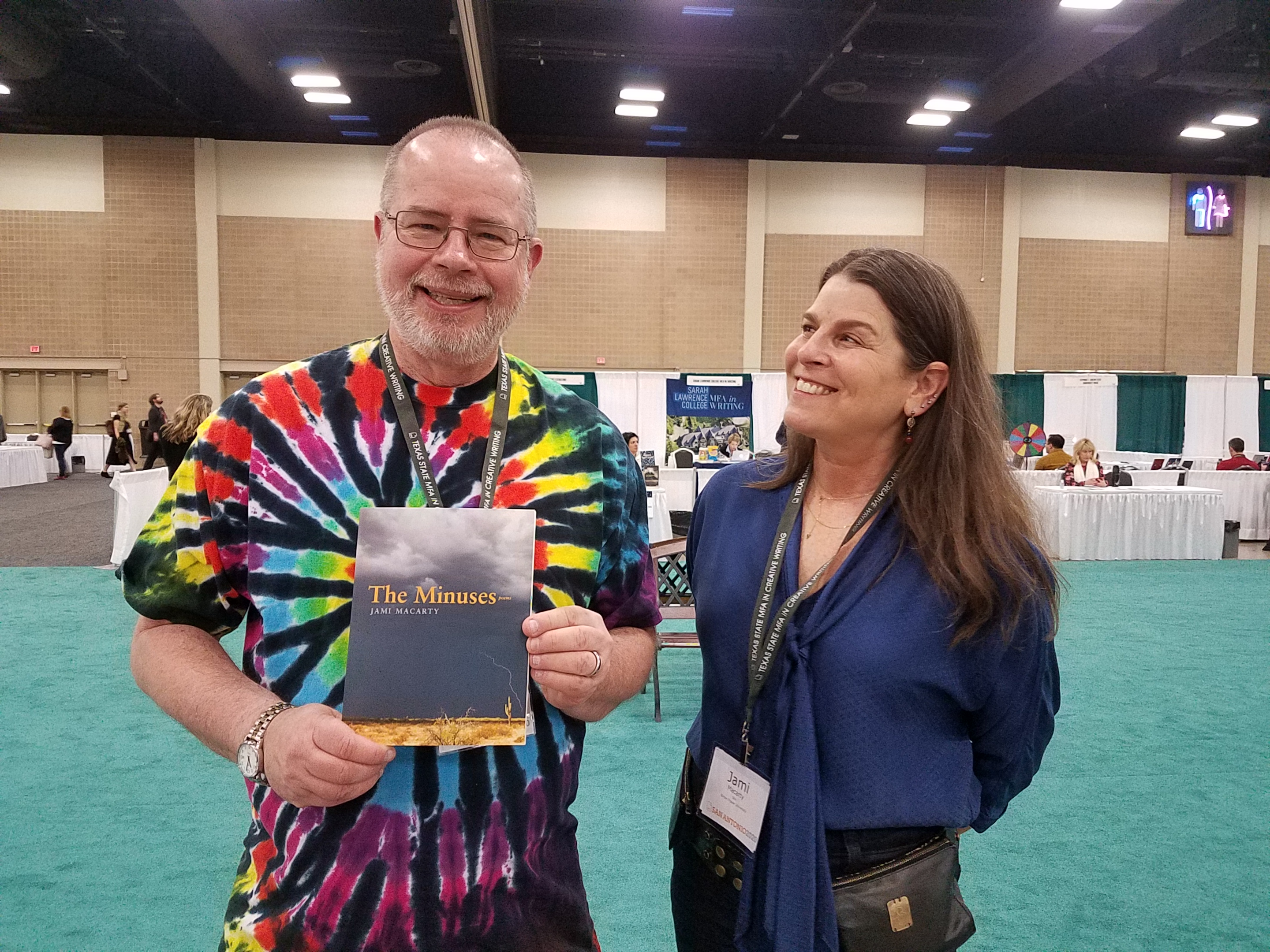Hello from late October, dear Readers!
I am here with you to share good news.


The good people at Vallum Magazine have nominated my poem “Is Occurring” for a best-of-the-small-presses Pushcart Prize! Whoo Hoo! This is a precious acknowledgement and I am honored that the editors at Vallum put forth my poem. I wrote about Vallum Magazine‘s good people and just how very supportive of me and my writing they have been in May. To read about the mutually appreciative and supportive relationships between a poet and editors who believe in and support her writing— the stuff of community—take a peek at my celebration of Vallum Magazine!
: :


I am also here with you to announce the publication of two of my poems and to invite you to visit with and read them.
“Snow-Image,” created from “The Snow-Image: A Childish Miracle” in The Snow-Image, and Other Twice-Told Tales, by Nathaniel Hawthorne (1852) was published in Heron Tree, an online poetry journal, on September 14, 2022.

What do I mean by “created from”? I mean the poem was created by a process of highlighting some words—a sort of erasure—I was drawn to on each page of Hawthorne’s short story, removing the words from their original context to reveal new word combinations and meaning. This process, in effect, rendered all other words to the background, as if they had been erased. Sometimes that procedure would leave but two words on a page. For example, below are sections 6. and 7. (of the 22-sections) within the poem “Snow-Image.”
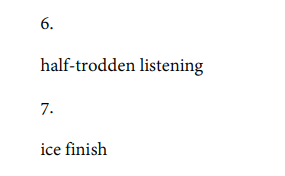
Each section refers to a page within the 22-page story. The choice to have sections and then to have each one correspond to a page of the story emerged after the poem was composed and I began thinking through how it would live on the page. I talk more about the poem’s composition process in an accompaniment to the poem. Here is the beginning of the statement…

While making this poem, I became lost in the best of ways—intuitively, creatively—within the compositional process. Erasures are fun! Their compositional process is akin to a treasure hunt for words. I have wanted to answer a Heron Tree call for erasure poems for a while and hurrah “Snow-Image”—made and sent for consideration on January 15, 2022, accepted for publication 16 days later (whoo hoo that near-to-instant gratification!)—is now a poem in Heron Tree Volume 9, along with other poems created from the short stories of Nathaniel Hawthorne, Letters of a Radio-Engineer to His Son, by John Mills, and other pre-1927 materials, all now in the public domain. Among the gifts that accompany the publication of “Snow-Image” is that I share space in Heron Tree Volume 9 with B. J. Buckley and Iris Dunkle, beautiful poets and good pals. B. J. Buckley created her poem “Imagine a Grand Picnic” from John Mills’ Letters of a Radio-Engineer to His Son (1922); Iris Jamahl Dunkle created her poem “Earthquake” from The Valley of the Moon by Jack London (1913).

Read my poem “Snow-Image” created from “The Snow-Image: A Childish Miracle” in The Snow-Image, and Other Twice-Told Tales by Nathaniel Hawthorne (1852), along with the composition process note in Heron Tree Volume 9.
: :
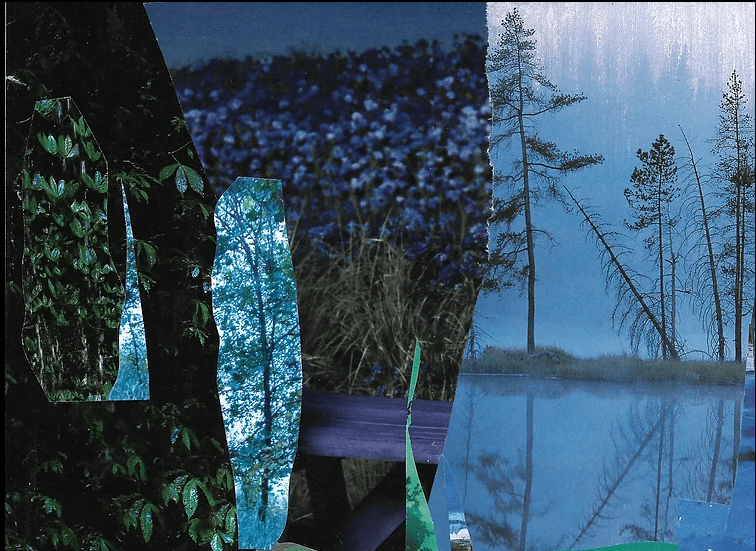
There is more! It is true, I am fortunate that editors recognize my writing by publishing it. Another poem from my manuscript, The Long Now Conditions Permit, “To be for infers” appears in the Fall 2022 of Concision Poetry Journal Issue 2.3. Concision is also an online poetry journal. Accompanying my and the other poems is cover art by Deborah Keenan. See an upper portion of the collage, “Another World” above and a lower portion below.

Meow! I made “To be for infers” via a similar procedure of highlighting individual words and language formulations that came to my attention, but in this poem’s case, the source material was my own writing. As I recall, I started with a three-page block of text. A chunk! Slowly as I read, individual words and language formulations called themselves to the foreground, while simultaneously other words were relegated to the background, where they faded away.

The making of “To be for infers” was a process more engrossing, involved, and time-consuming than that which brought to life “Snow-Image.” I think that is owed to a few reasons. I was drawing from my own writing. There is just some other attention and effort that requires of me. Also, I was taking the time to read in order to discover what possibilities were contained within the text block while also culling word bits and language pieces that called themselves to the foreground of my attention. Plus, I was composing as I read along and made selections; each selection associated with the one previous, and therefore holding the whole in my mind as I went along. Intense, absorbing fun! Eventually, the bits and pieces were assembled, pretty much in order of their discovery in the text block on fresh, spacious pages. Some words were added, and of course the poem went through a few rounds of tweaks. Those tweaks were mostly to the poem’s middle; the beginning and ending of the poem stayed as is.

What I share with you on process in the note above, adds to the brief reflection accompanying the poem in Concision Poetry Journal. Along with the reflection on the poem and the poem, I also offer a list of five books that occupied my attention during the last few months. A bonus to the publication of “To be for infers” is to join and be joined by the poems by women writers from my community: Deborah Bernhardt, Joanna Furhman, and Rachel Mortiz.
This is the second time this year, one of my poems has been published in Concision Poetry Journal. “Before, a Study of Suspension” appears in Issue 2.2, Summer 2022. I wrote about that appearance in my June sharing. Through these two appearances, I have had the chance to get to know Haley Lasché, Editor. I really like her; she is kind, generous, and responsive. I am thrilled to have joined the Concision Poetry Journal community and to be in conversation with Haley Lasché.

Community is everything! I am thrilled we are in one together, dear Reader! Now that I am nearing the close of this post, I can share a reflection. I come to these posts knowing I want to share with you news and events arising in my writing life, but I allow how that sharing unfolds to emerge spontaneously as I write. That way we meet at discovery and surprise. One of the surprises for me in this sharing is the connections between the compositional processes of the two poems “Snow-Image” and “To be for infers,” and now, this post. I did not plan that or this; it occurred and I went with it. That makes me so happy! That. The discovery in real time of connections between poems and approaches, and between writer and reader—me and you. Such gratitude abounds!
: :
The Pluses!
+ Thank you bows (continuous!) to you, dear reader, for the gift of your attention!
+ Thank you bows to my community of women/women-identified writers for their generous, loving support, inspiration, and encouragement.
+ Thank you bows to the good people at Vallum Magazine for nominating “Is Occurring” for a Pushcart Prize and for their continuous support of my poems.
+ Thank you bows to Chris Campolo and Rebecca Resinski, the founders of Heron Tree for their support of my writing/making practice and for giving “Snow-Image” a home roost.
+ Thank you bows to Haley Lasché, Editor of Concision Poetry Journal for her continuing support of my writing and for giving “To be for infers” a concise home.
+ I bow to the existence of Vallum Magazine, Heron Tree, and Concision Poetry Journal, where I find community.
+ Thank you bows (continuous!) to my publisher Stephanie G’Schwind, and Mountain West Poetry Series editors Donald Revell and Kazim Ali, et al interns at the Center for Literary Publishing (CLP) for making The Minuses (2020) with me.
+ Thank you bows (continuous!) to Beth Svinarich et al at University Press of Colorado for their beautiful support to me and The Minuses.
+ Thank you bows (continuous!) to monsoon storm chaser and marvelous professional photographer, Liz Kemp whose monsoon photograph storms the cover of The Minuses.
+ Thank you bows to Nomados Literary Publishers, Meredith and Peter Quartermain for making my chapbook Instinctive Acts with me.
+ Thank you bows to Vallum Chapbook Series and editors Leigh Kotsilidis and Eleni Zisimatos for making my chapbook Mind of Spring with me.
+ Thank you bows to Finishing Line Press and editors Leah Maines and Christen Kinkaid for making my chapbook Landscape of The Wait with me.
+ Thank you bows (continuous!) to Vincent K. Wong for his friendship, creative collaboration, and for taking my author photos.
+ This bears repeating: Thank you bows (continuous!) to you, dear reader, for the gift of your attention! If you have any questions or comments, write me! I would love to hear from you!








